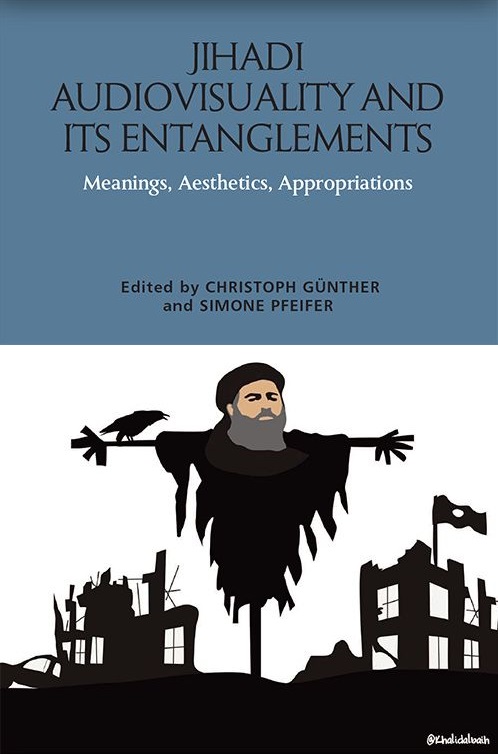Want to submit a blog post? Click here.
A new book looks at the use of audiovisual media by jihadi groups and their supporters as well as at how these contributions are being countered
Recent attacks by jihadists in Kabul, Dresden, Paris, and Vienna have brought the problem of Islamist terror back into the public eye. The events once again highlight the importance of understanding the role of jihadi media contributions, including videos and their distribution across the Internet and social media platforms.
A junior research group at Johannes Gutenberg University Mainz (JGU) has conducted an in-depth analysis of dozens of jihadi videos over the past three years.
“What is striking is that the video productions are very much tailored to our own viewing habits, which have been shaped by global cinema and television,” explained Dr. Christoph Günther, head of the junior research group.
While jihadi videos tend to attract a high level of attention, opposition figures who use their artistic works to combat the concepts disseminated by radical Islamists hardly get noticed by the general public. This aspect and the results of the research group’s analyses are discussed in the edited volume Jihadi Audiovisuality and its Entanglements: Meanings, Aesthetics, Appropriations, published recently by Edinburgh University Press.
Online representations analyzed from perspective of Islamic studies, anthropology, and film and media studies
The interdisciplinary junior research group “Jihadism on the Internet” has been funded by the German Federal Ministry of Education and Research (BMBF) under the Federal Government’s “Research for Civil Security” framework program since 2017. The group now has an inventory of around 2,500 videos, the earliest dating from the early 1980s and the most recent from late 2020.
A number of videos focus on scenes from ordinary everyday life, such as men fishing or children riding carousels. Others, however, show shootings, beheadings, and military confrontations. What these productions have in common is their objective.
“They always try to include an ideal image of life they consider pleasing to God while underscoring the pictures with a range of sounds,” said Christoph Günther, who is trained in Islamic Studies.
The group has so far carried out in-depth studies of about 80 videos. The video analysis is done primarily in a collaborative manner by all six members of the research team, who each contribute their expertise in the fields of Islamic studies, anthropology, and film and media studies.
The guiding principle of the investigations is the concept of audiovisuality. It helps the researchers to probe the construction of knowledge and meaning through images, videos, and sounds.
“We define audiovisuality as the links between actors generating meaning and knowledge through audiovisual media, people’s sensations, and the mediations they encounter,” said Dr. Simone Pfeifer, co-editor of the volume together with Dr. Christoph Günther.
This means that the researchers do not only examine the simple representation of elements, but also how these are conveyed and what sensations and interpretations they are intended to evoke and inspire.
“We look in detail at all the sensory stimuli that are designed to have an influence on viewers,” emphasized Pfeifer.
Ideologies and schools of thought are not only expressed through language or images in the audiovisual media.
“We find this kind of approach reproduced across media in general and in very ordinary contexts, for example in the posture or gestures of subjects, in habits and manners, and in broad expressions of belonging,” said Pfeifer.
The research group is particularly interested in the relationship that develops between the producers of the videos and the viewers, in addition to the inherent power of the material shown.
Opposition to online jihadi propaganda goes largely unnoticed by general public
One of the prominent features of the productions is the use of camera panning styles derived from contemporary cinema and television techniques. The audiovisual messages of jihadi groups are adapted to our viewing habits in other ways as well.
“This is hardly surprising. The people involved in the production of these images and sounds have grown up with the same films, music, and computer games as we have. They come from the midst of our societies and are tuned into the mainstream.”
However, Christoph Günther also points out that videos glorifying violence from groups such as the self-proclaimed Islamic State or other terror militias are countered extensively by Muslim activists. “But these opposition figures barely feature in the public’s perception.”
They try to use creativity and artistic work to dilute the impact of jihadi imagery – in parts motivated by religion and theology, in others by politics. This includes, for example, the corruption and mockery of anāshīd, a form of a cappella hymns designed for performance by exclusively male voices. The research group examined various anāshīd chants – and the often underestimated acoustic dimension of jihadi representations in general – and outlined their conclusions in the volume.
The group’s work does not end there. By the end of 2021, the researchers plan to publish a video annotation tool in which it will be possible to integrate all archived videos and amass related information.
This Time-Based Image Annotation Tool (TIMAAT) will be available for educational purposes in schools and at universities and will be available free of charge for use in other projects in the humanities and social sciences. The Jihadism on the Internet junior research group will continue its work until May 2022; over the five years of its existence, the group will be in receipt of a total of EUR 2.7 million in funding from the BMBF.
This article was originally published on Eurasia Review, republished here with permission.
